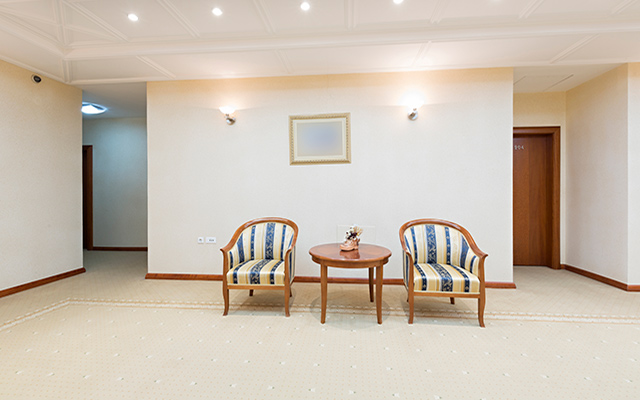It’s been pretty well established after four months of pandemic-induced chaos that seniors and low-income folks have been hit hardest by the virus. So it’s not surprising to learn that elderly occupants of public-housing complexes across the country are particularly vulnerable. What’s harder to understand is why the government has paid so little attention to the threat.
As Judith Graham reports in Kaiser Health News, some 1.6 million older adults — most coping with chronic health conditions — live in government-subsidized housing developments. And with their shared common spaces, these buildings are virtual petri dishes for the virus. But because government agencies classify these apartments as “independent living” units, they’ve been largely overlooked during the pandemic.
“This is a moment when we really should be pushing assistance and guidance toward these senior communities, but we’re not,” Linda Couch, vice president of housing for LeadingAge, a nonprofit senior housing association, tells Graham. “No one is watching over what’s happening.”
And there’s little solid data on the virus’s spread in these developments because the Centers for Disease Control and Prevention has never mandated that state or local housing agencies track it. Even if the CDC had acted more forcefully, though, it’s not clear whether that information would ever reach the residents who most need it.
In late May, U.S. Housing and Urban Development officials finally directed public-housing staff to work with local health departments to notify residents of virus exposure in their buildings. But, as Graham discovered in Chicago, that mandate was essentially meaningless. The city health department now requires managers of senior housing complexes to report COVID outbreaks, but the Chicago Housing Authority has blocked the department from publishing the data due to privacy concerns, so it’s impossible to know if — and where — the virus is spreading.
Meanwhile, only in New York has there been any systematic COVID-19 testing among public-housing residents. “Without testing, there’s no way of knowing how many people have the virus,” says Michael Kane, executive director of the National Alliance of HUD Tenants. “Our concern is that there could be a transmission danger similar to what’s going on in nursing homes or assisted living.”
And though HUD eventually distributed a set of CDC recommendations to prevent the spread of the virus in public housing, Lori Clark, executive director of the Jane Addams Senior Caucus, tells Graham that nothing much has changed. No information has been distributed, no one was screening visitors, and many buildings were understaffed, because many workers were choosing to stay home.
“We felt abandoned,” says Carmen Betances, 68, a resident at the Elizabeth Woods Apartments. “They did no cleaning, and they did not prepare the property for the invisible enemy that has now taken over. They gave us no information about what to do.”
Betances and some of her neighbors have responded by forming their own cleaning crew, wiping down everything from vending machines in the laundry room to counters in the lobby in an effort to reduce the potential of infection. But without knowing when or if any of her fellow residents have been struck by the virus, their heroic efforts may go for naught.
Graham found no such initiatives at the Congressman George W. Collins Apartments on Chicago’s Near West Side, where Davetta Brooks, 75, describes the conditions as “deplorable.” No one is wearing masks or gloves, she says, and “they’re touching everything on the elevator, in the laundry room. And anybody and everybody’s relatives and friends are coming in and out with no scrutiny.”
And, while she’s heard ambulances come and go, no one really knows whether a resident has tested positive for the virus — or died as a result. “This building is not safe,” she says. “With all the things happening in the U.S., this is what ‘seniors’ lives don’t matter’ looks like.”




This Post Has 0 Comments